I have lived in Spain a dozen years without going to either the Dali Museum in Figueres or Dali’s home in Portlligat. At a lunch event the man opposite me talked about a town near Portlligat, Cadaqués, where he and his wife owned a house, making it sound enchanting.
I have a conflicted relationship with Dali. I think he is a brilliant painter, absolutely extraordinary, but am bored by all the cute, cunning, clever, clever things he did. I wish he had needed less public attention and had focused more on his painting. I turn my eyes away from his politics.
So in April of this year, our first year of living with Covid, when we were allowed out on a leash reaching only as far as the end of the province we lived in, I decided to go. A friend called a taxi company in Figueres to drive me to Cadaqués. Another friend, a hotel expert, suggested the Playasol hotel and I made my train reservation.
Before I got on the train in Barcelona I received a call from a strongly accented—not Spanish—male voice asking if I had ordered a taxi. I said, “Yes,“ and got on the train.
It passed through fields of yellow and occasionally blue flowers. Scarlet poppies left spatterings of blood on either side of narrow roads brilliant against the grass. When I detrained in Figueres a young man outside the station was holding up a sign with my name on it.
He was from east of Suez and most impressed by my age. He treated me like the Queen Mother—if there had been a carriage robe to tuck around my legs he would have tucked–worrying that I might feel sick on the twisting mountain roads that take one up over a ridge down to the sea and Cadaques. I didn’t think there was much point in lecturing him about driving in the Rockies so I assured him that I have a good head.
There is a lot of American style suburban sprawl outside Figueres and the towns near it but there are also fields blanketed with bloody poppies. Once in the mountains there were, beside the road, tufts of what looked to me like Scotch broom. The mountainsides had been terraced with unmortared rock walls to grow more olive trees. What labor those terraces must have been. The steep mountainsides were silver green with olives and yellow with broom.
I had a large, adequate if not very interesting fish lunch at a restaurant facing the sea and then tried to get up to the church, which may not have been open, but I was defeated by the intricacy of the winding lanes. The church is imposing as it towers over the town.
I had a Japanese sized room with a balcony looking up to the town and over the water. Cadaqués is essentially a one street town, the one that runs along the edge of the sea, all others being lanes that twist up hill inland. But it was a comfortable room arranged so that one woke up to look out at the Mediterranean.
They do a nice breakfast at the Playasol although the buffet is a bit ordinary. However, they cook eggs to your specifications. Again you view the Mediterranean as well as the cars and people populating the main street, which winds its way from hovering along a small patch of shingle beach to cresting up into a wall above the lapping waves, down again to another beach. The street is a promenade. At the breakfast hour there were dogs pulling their masters and mistresses, looking a bit bleary eyed, briskly along in the morning sun. Dogs, unlike humans, never seem to have a period of “waking up” but come to, stretch and are ready for whatever the day presents.
I asked the wife of the owner of the hotel for directions to the Dali House. She produced a map. I always feel more secure with a map but it really was a superfluity in this case.
I walked down the main road, turned right and started to climb. There was practically no traffic but lots of houses and gardens to admire on either side. The yellow, bushy blooms, which I was now sure was Scotch broom, were everywhere. I sent a picture to a Scot friend and he too thought it was Scotch broom.
At the top of the hill, just as you turn right again, is Saint Baldiri’s hermitage with his image and little else except white walls rising around solitude. He is a border crossing saint honored in both France, particularly Nimes, and Spain. He was martyred when he crashed a pagan festival and, in righteous indignation, pushed over the statue of the god being feted. The offended pagans cut off his head, which bounced three times, a spring bursting out at the place of each bounce. There is a peaceful graveyard with cypress, olives and bougainvillea.
This road is mildly busy but you quickly come to a sign directing you to turn down to the sea for the Dali house. The house, or houses, brilliant white, is stunningly located among rocks at the edge of the sea, a composite of fishermen’s houses, as in Bangkok Jim Thompson’s house is a composite of old teak houses. Across from it is a cluster of small two story houses, flowers everywhere and in front rocks and sea. There was an interesting small surreal painting on the wall of one of these houses of a man standing by a boat, behind him the patterned whorl of a shell spreading out to become sea. I was early for my scheduled tour so I had plenty of time to look about me and fanaticize about buying one little house with a big balcony that was for sale.
The Dali house is pleasant and livable for two people, no guest rooms. When you enter you are greeted by a grinning polar bear bedecked with costume jewelry—chains and medallions. He is not the only stuffed animal you will see; there are birds on top of cabinets. Stuffed animals used to be acceptable and even a signal that you were in vogue. Now we look askance at them. They aren’t just in bad taste, they signal not voguishness, but a lack of environmental and interspecies awareness, an acceptance of derogation and cruelty to animals. I found it macabre to have dusty dead animals about.
There was a handsome library but it seemed to me to belong to a not serious reader—large orderly volumes, shelves and shelves of an encyclopedia but none of that disheveled quality that voracious readers attain with broken bindings and torn covers. There were no musical instruments in the house. All the rooms have superb views of the rocks and the sea.
The two beds in the bedroom had red and blue draperies above and on them, quite regal. The living room, with a sea view, was centered by a table with a big, beautifully made ceramic snail. The studio looked functional.
We were walked through by a woman who spoke well in Spanish and English. She dropped us at the swimming pool, which is the most entertaining of all the spaces. It is fed water by small, paired ceramic swans of the giftee shoppee variety that spout water into its channel. To one side is a sitting area with a slightly fade lipstick red, Mae West lip couch and about it Pirelli signs in yellow and black and a number of Michelin men.
The inclusion of the commercial is interesting and irritating in this setting but also amusing and dislocating. The lip couch is for me one of those clevernesses of Dali’s that do not engage me. So you are sitting on the ledge of Mae West’s lower lip, so what? Maybe I am one of those dummies who just don’t get it.
I walked back to Cadaqués, which was just as pretty as coming, better because it was down hill. I went to tourist information but they didn’t know if the church was open. This time, however, I found my way up, asking as I went and discovering along the lanes a nice looking hostel.
The church is well worth a visit. The main altar is an extraordinary piece of Baroque carving, a dark mass of figures, niches, symbols, cherubs. There aren’t two centimeters of uncarved space on its surface. It is not lit up so it is difficult to make things out but it´s a sort of attic of religious images. Doves, lambs, saints and angels are perched among its rich, dark, carved wooden caves.
Toward the front of the church on the left are two pictures. One depicting Saint Baldoris’ martyrdom is crammed with writhing figures depicted with lots of gold. A much earlier wall painting is full of people with large Byzantine eyes.
I walked down and had lunch at a little bar—good gazpacho, grilled shrimp and bacalao with ratatouille. I ordered a bit too much and the waiter was definitely censorious about that left piece of bacalao.
The next morning I took a taxi into Figueres. My driver was not as solicitous but certainly as efficient. He dropped me with my bag, I left it in the cloakroom, at the Dali Museum, which is large and airy and was crammed with Spanish tourists. That was nice to see.
The courtyard of the museum features a sculpture of a buxom nude on a round plinth, an upside down boat dangling in the air and a car up on a platform. We all shaded our eyes to look into the car but there was nothing there. It is, however, a great old car. Around the walls tucked into the ivy are heads and sculptures of various sorts, some a bit nightmarish.
I liked the court better than most of the museum, although there are some beautiful early paintings, one of Cadaques, among the exhibits. But most of what was on display didn’t grab me until almost the last room, or maybe it was the last room, where there are a small group of paintings one of which devastated me. Some paintings, Rembrandt’s self-portrait, slowly enclose you as you gaze at them; others are a sort of psychological detonation.
The painting, very small, is monochromatic; sky and earth are nearly the same sandy tone. The strip in the middle of the painting has darker and lighter shades. The town is lighter—you know that when you get to it, it will be white—the mountain slopes are darker. At either side the world gets hazy and on the right land and sky blend together into that yellowish, sandy tone. Directly ahead is a small wooden cart, the simplest of carts, with a canvas cover that creates a gently curved ceiling and sides but you are looking straight through it at the driver’s slender back and the ears and legs of the horse or donkey. The great wooden wheels are canted slightly and one, the right one is tipped with fiery orange. Between you and the cart is yellow tan earth, a few stones, not even tracks. The cart’s wheels have left no impression. It’s called Carreta fantasma and it is. The feeling of emptiness is immense. In that emptiness is a meaning I cannot pin down, I cannot express, but it is vibrant.
Down stairs, through a separate entrance near the gift shop is another museum. This is of jewelry that Dali designed. Everything is stunning. There is an eye clock with a diamond tear drop, telephone earrings, a honeycomb heart of rubies with diamonds lodged amongst the comb’s openings, a golden pomegranate broken open to show its inner depths of diamonds studded with ruby pomegranate seeds. There are crucifixes, Madonnas, a Daphne, Tristan and Isolde, an Ophelia, and on a rough fluorite crystal a construction called “Explosion” which it is of diamonds, lapis lazuli, rubies and platinum.
Thoroughly delighted by this ending, a friend had told me to look for the little museum, which one might miss, I collected my suitcase, rolled it to a café where I had a bocadillo freshly made. Wandering about after lunch to waste a little time before I went to the train I came across a Rambla where I could have had a more elaborate lunch. I found a taxi to the station and so home again.
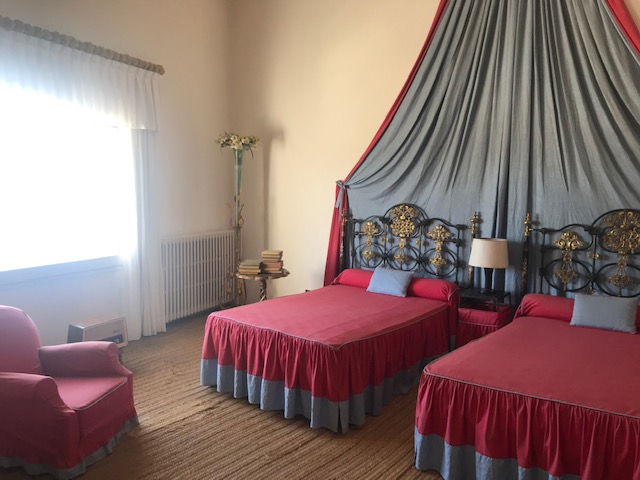
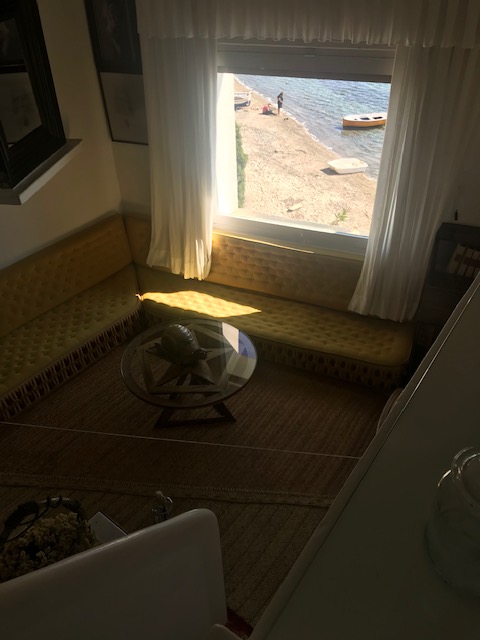
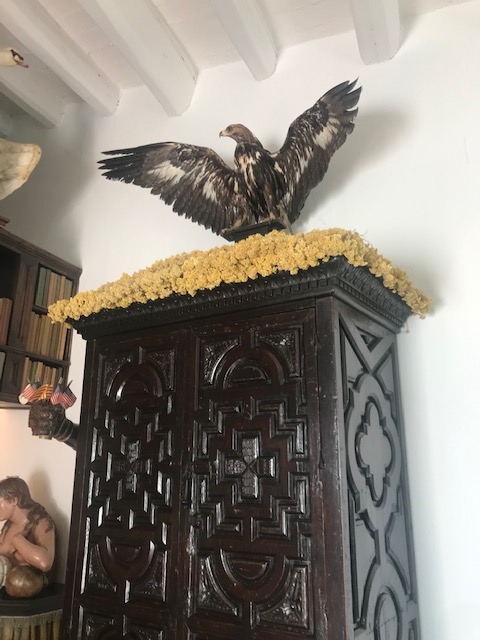


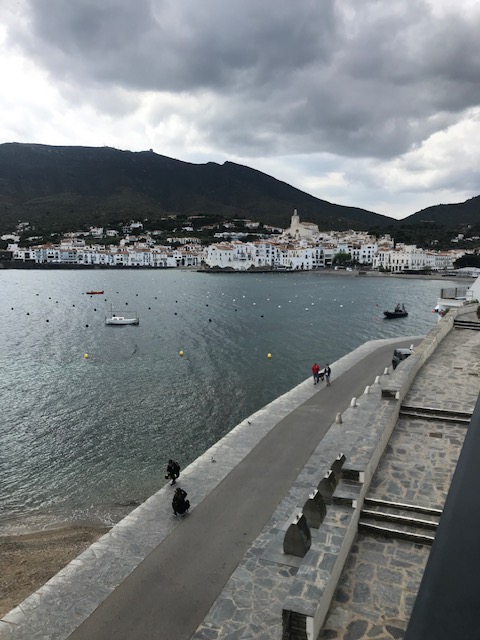
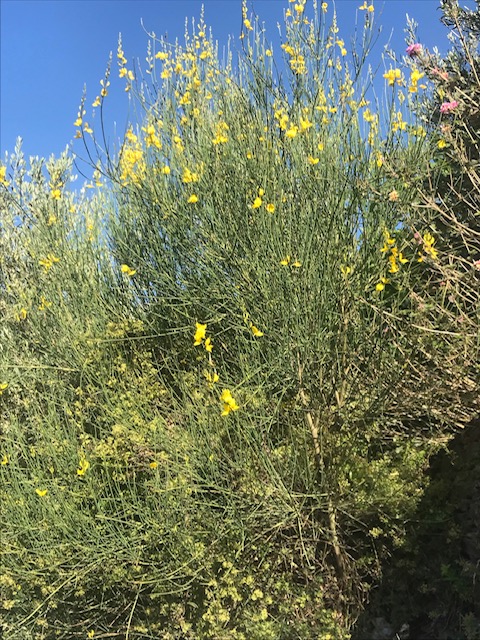
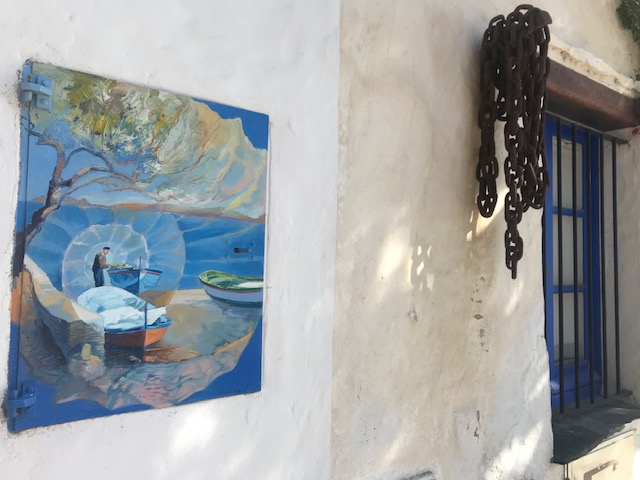
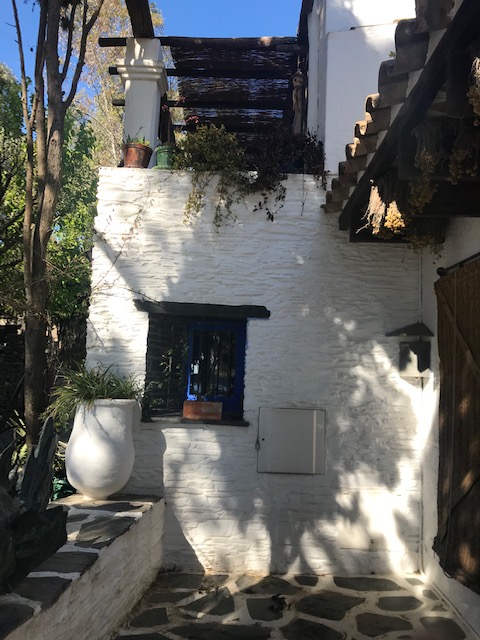
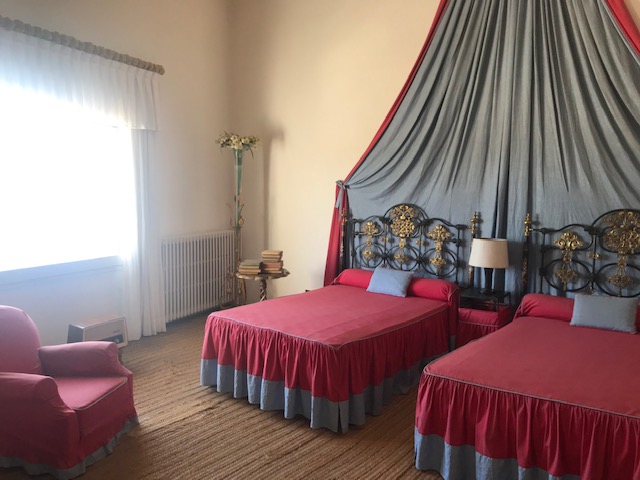
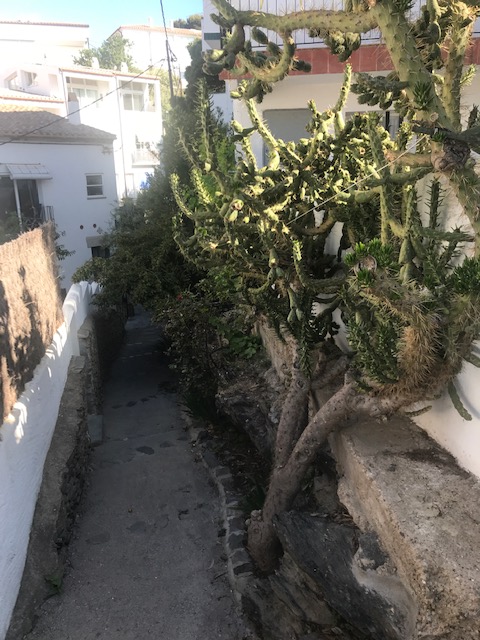
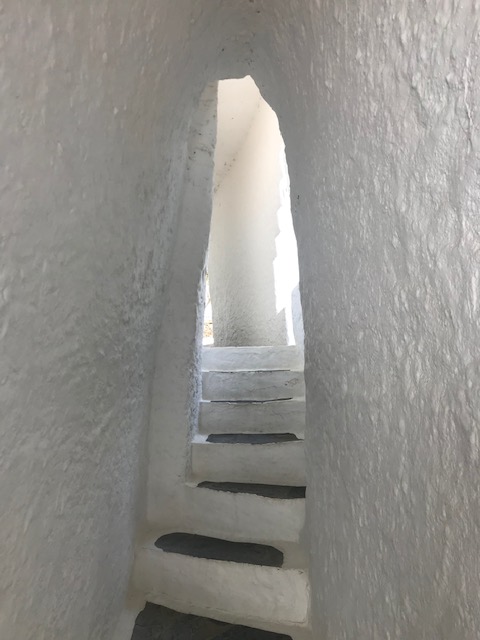
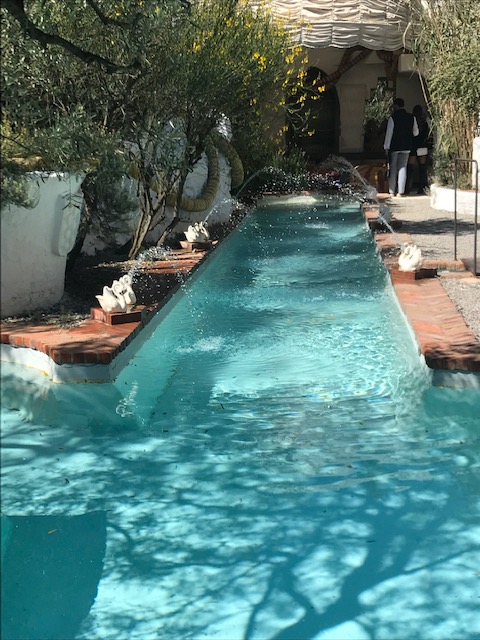
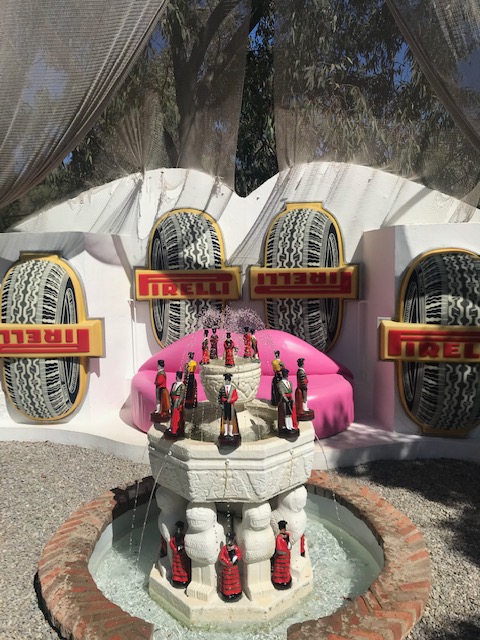
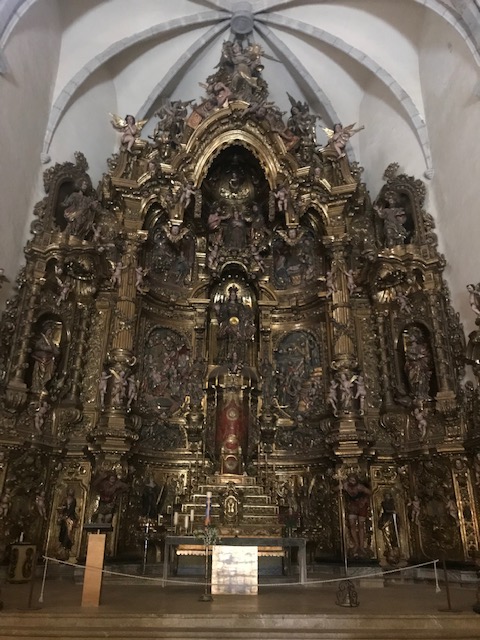
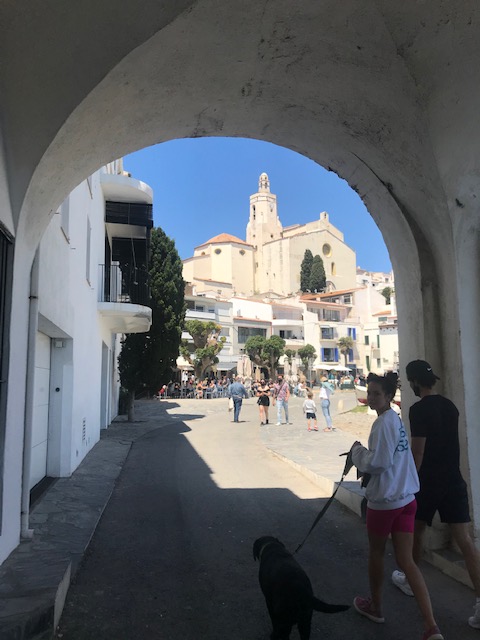
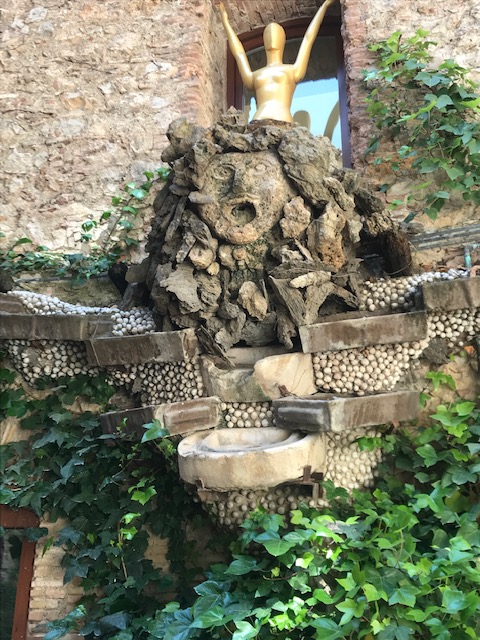
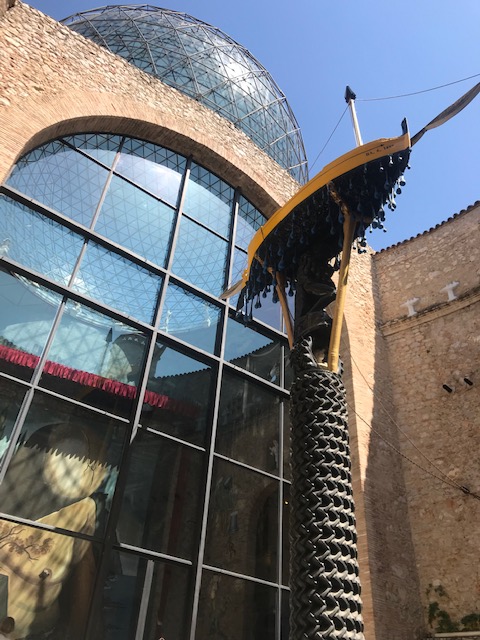
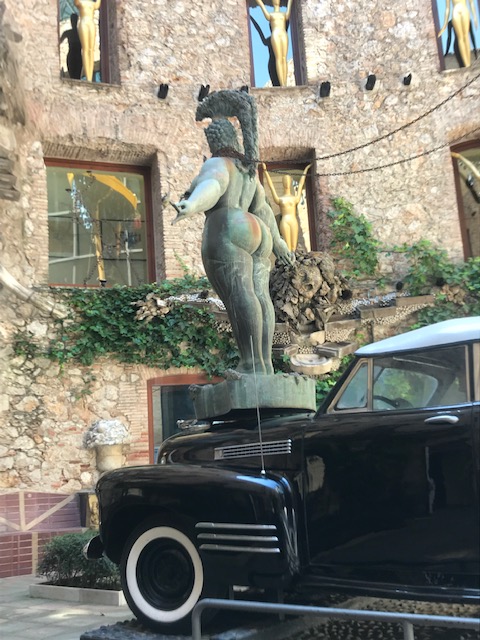
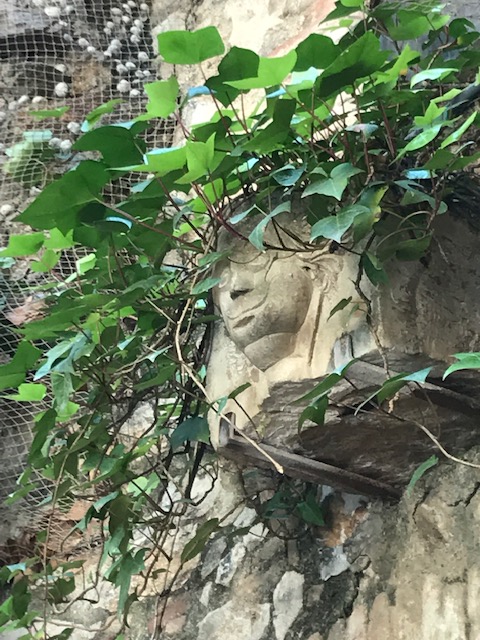
We thought about going there but instead stayed in Barcelona and really enjoyed it. That was back in 2017. We left 1 day early because of impending hard rain and possible flood. Headed by train to Germany.
LikeLike
Wonderful, Karen. Loved the beautiful photos with superb descriptions. We are so fortunate that you take us along on your exquisite excursions. Bob
LikeLike
Karen
Wonderful description of the Dali museum, I’d love to go. Great car, as you say.
Keep on traveling
Edward
LikeLike
You are lucky to have made this wonderful trip. I love Cadeques, have been there twice, next time I’ll drive there. Loved the tour of Dali’s home at Port Llegat. So many of his paintings use the sea view from the house. Never cared for his art but LOVE his politics!
LikeLike
I notice that the closer one gets to the French border the better the quality of the restaurant food.
LikeLike
I’ve been to all of these places multiple times and I love how you described your time there, right down to that leftover piece of cod at lunch. Kudos to walking up to Port Lligat from Cadaqués. No easy feat!
LikeLike
Hello Karen!
Finally got to your latest Blog. Somehow I don’t like that word ‘blog’. It reminds me of The Blob or something. I was thinking something more like ‘essay’ but something more than that. I greatly enjoyed it. I did not even know Dali was Spanish and Catalan… What I remember most about him is The Persistence of Memory. The writing, the photographs, the allusions and the vocabulary (a vocabulary enhancement for me) were all exquisite. When I looked up Saint Baldiri I was surprised that you were cited twice on Bing and Twice on Wikipedia!
You may remember I once sent you a short story that you liked by my late friend Alan Fisher. Alan was also quite a film expert. His favorite filmmaker was Luis Bunuel. He told me once in a Mexican restaurant about a dispute between Bunuel and Dali, after which which (or later) Bunuel moved to Mexico. Thanks to Alan, I saw the movie The Exterminating Angel, but that was not his favorite one of Bunuel’s (I forget the other ones). But oddly, the movie closest to his heart was The Wild Bunch ! Why he liked The Wild Bunch so much, I’ll never know… / Hope you are in better health now. Hope Galata is okay. Naomi has gotten a lot bigger but as sweet and smart as ever. Take care! matt
>
LikeLike